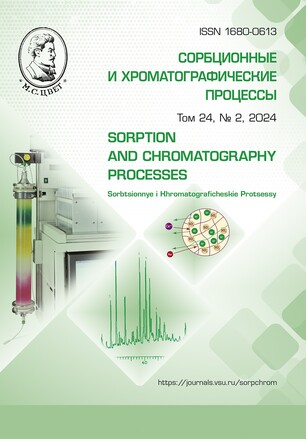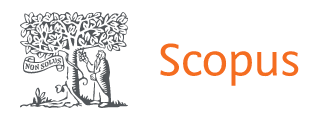Анализ синтетических красителей в сточных водах методом ВЭЖХ
Аннотация
Анализ синтетических красителей в сточных водах является актуальной задачей современной аналитической химии, поскольку повышенное содержание красителей в сточных водах может негативно сказаться на экологии. Для контроля за содержанием красителей в различных объектах часто применяется обращённо-фазовая высокоэффективная жидкостная хроматография (ОФ ВЭЖХ), которая позволяет достоверно определить содержание интересующих веществ. Целью данной работы являлось создание и оценка метрологических характеристик методики анализа синтетических красителей в сточных водах предприятий с повышенным содержанием неорганических солей. Хроматографическая система, используемая в данной работе, состояла из насоса высокого давления производства Knauer, разделение осуществлялось на обращено-фазовой колонке Kromasil 100-5-C18(w) (4.6×250 мм) в режиме градиентного элюирования. В качестве подвижной фазы применяли ацетонитрил и раствор ацетата аммония. Детектирование синтетических красителей производилось на диодно-матричном детекторе Azura. В работе представлены результаты концентрирования 10 синтетических красителей на коммерчески доступных патронах для твердофазной экстракции, которые подходят для работы с водными растворами с повышенным содержанием неорганических солей. Для каждого вещества была рассчитана степень концентрирования из дистиллированной и модельной сточной вод, которая варьируется от 2 до 98%. Наивысшую степень концентрирования из анализируемых патронов при эксплуатации в условиях близким к реальным сточным водам показал патрон марки «Диапак П», при pH концентрируемого раствора равного 4. По результатам данной работы разработана и валидирована методика одновременного определения 10 синтетических пищевых красителей (СПК) (Е102, Е104, Е110, Е122, Е124, Е129, Е131, Е133, Е142, Е151) в водных и органических растворах. Результаты работы могут быть полезны в области аналитического контроля за содержанием синтетических красителей в сточных водах предприятий. Предел промежуточной прецизионности методики не превысил 5%, а расширенная неопределенность измерения составила менее 10%.
Скачивания
Литература
Ghaly A. E., Ananthashankar R., Alhattab M., Ramakrishnan V.V. Produc-tion, Characterization and Treatment of Textile Effluents: A Critical Review. J Chem Eng Process Technol. 2014; 5(1): 18.
Raman C.D., Kanmani S. Textile dye degradation using nano zero valent iron: A review. Journal of Environmental Man-agement. 2016; 177(15): 341-355.
Akpan U.G., Hazard J. Parameters af-fecting the photocatalytic degradation of dyes using TiO2-based photocatalysts: a review. Journal of Hazardous Materials. 2009; 170: 520-529.
Ali S.W., Mirza, M.L., Bhatti T.M. Removal of Cr (VI) using iron nanoparti-cles supported on porous cation-exchange resin. Hydrometallurgy. Journal of Hydro-metallurgy. 2015; 157: 82-89.
Batool S., Akib S., Ahmad M., Balkhair K.S., Ashraf M.A. Study of mod-ern nano enhanced techniques for removal of dyes and metals. Journal of Nanomater. 2014; 1-20.
Tratnyek P.G., Johnson R.L. Nano-technologies for environmental cleanup. Journal of Nano Today. 2006; 1: 44-48.
Robinson T., McMullan G. Marchant R., Nigam P. Remediation of dyes in textile effluent: a critical review on current treat-ment technologies with a proposed alterna-tive. Journal of Bioresour. Technol. 2001; 77: 247-255.
Satapanajaru T., Chompuchan C., Sun-tornchot P., Pengthamkeerati P. Enhancing decolorization of reactive black 5 and reac-tive red 198 during nano zerovalent iron treatment. Journal of Desalination. 2011; 266: 218-230.
Styskin E.L., Icikson L.B., Braude E.V. Prakticheskaja vysokojeffektivnaja zhidkostnaja hromatografija. M. 1986. 284 p. (In Russ.)
GOST 33406-2015. Produkcija alkogol'naja, bezalkogol'naja i sokovaja, dobavki vkusoaromaticheskie. Opredelenie soderzhanija sinteticheskih krasitelej metodom vysokojeffektivnoj zhidkostnoj hromatografii. Minsk: Gosstandart. 2017. P. 10. (In Russ.)
GOST 31504-2012. Moloko i mo-lochnaja produkcija. Opredelenie soderzhanija konservantov i krasitelej metodom VJeZhH. Minsk: Gosstandart. 2013. P. 18. (In Russ.)
MVI MN 2399-2005. Metodika opre-delenija sinteticheskih krasitelej v alkogol'nyh i bezalkogol'nyh napitkah s pomoshh'ju vysokojeffektivnoj zhidkostnoj hromatografii. Cvid-vo ob attestacii № 380/2005 ot 07.12.2005. Minsk: GU «Resp. nauch.-prakt. centr gigieny». 2005. P. 11. (In Russ.)
Instrukcija po primeneniju Reg. № 108-1006, utv. 05.01.2007. Metodika opre-delenija sinteticheskih krasitelej v kon-diterskih i hlebobulochnyh izdelijah, mo-lochnyh produktah, sokah, biologicheski aktivnyh i pishhevyh dobavkah s pomoshh'ju VJeZhH. Minsk: Respublikan-skij nauchno-prakticheskij centr gigieny. 2007. P.11. (In Russ.)
Kiseleva M.G., Pimenova V.V., Eller K I. Optimization of Conditions for the HPLC Determination of Synthetic Dyes in Food. Journal of Analytical Chemistry. 2003; 58(7): 685.
Sychev K. Prakticheskij kurs zhidkostnoj hromatografii. M., KOKORO. 2013. 272 p. (In Russ.)
GOST 34229-2017 Produkcija soko-vaja. Opredelenie sinteticheskih krasitelej metodom vysokojeffektivnoj zhidkostnoj hromatografii. Moskva: Standartform. 2018. P. 21. (In Russ.)
Poljanskih E.I., Belysheva L.L., Fe-dorova T.A., Filatchenkova E.V., Pleshak E.M. Metodika kontrolja soderzhanija sin-teticheskih krasitelej v pishhevoj produkcii. Himicheskaja bezopasnost'. 2019; 3(1): 154-169. (In Russ.)
Malinka E.V., Egorova A.V., Anel'chik A.V., Antonovich V.P. Opre-delenie sinteticheskogo pishhevogo krasitelja E110 v bezalkogol'nom napitke. Himicheskaja nauka i tehnologija. 2015; 1(30): 29-33. (In Russ.)
Mazdeh F.Z., Khorrami A.R., Mora-di-Khatoonabadi Z., Aftabdari F.E., Shams Ardekani M.R., Moghaddam G., Haji-mahmoodi M. Determination of 8 synthetic food dyes by solid phase extraction and re-versed-phase high performance liquid chromatography. Trop. J. Pharm. Res. 2016; 15(1): 173-181.
Zhang Y., Zhou H., Wang Y., Wu X., Zhao Y. Simultaneous determination of seven synthetic colorants in wine by dis-persive micro-solid-phase extraction cou-pled with reversed-phase high performance liquid chromatography. J. Chromatogr. Sci. 2015; 53: 210-218.
Pagáčiková D., Lehotay J. Determi-nation of synthetic colors in meat products using high performance liquid chromatog-raphy with photodiode array detector. J. Liq. Chromatogr. Related Technol. 2015; 38: 579-583.
Zou T., He P., Yasen A., Li Z. De-termination of seven synthetic dyes in ani-mal feeds and meat by high performance liquid chromatography with photodiode array and tandem mass detectors. Food Chem. 2013; 138: 1742-1748.
Ramazanova G.R. Diss. kand. him. nauk. M., 2016, 186 p. (In Russ.)
GOST – 32050-2013. Metody identif-ikacii i opredelenija massovoj doli sin-teticheskih krasitelej v karameli. Moskva: Standartinform. 2014.P. 27. (In Russ.)
Odincova O.I., Kozlova O.V., Kuvaeva E.Ju. Tekstil'no-vspomogatel'nye veshhestva v processah krashenija tekstil'nyh materialov: ucheb. Posobie. Ivan. Gos. himiko-tehnologicheskij univer-sitet. Ivanovo, 2017. 160 p. (In Russ.)
Vasijarov G.G., Alekseeva G. S. Koncentrirujushhie patrony diapak. Mos-kva, 2018. 51 p. (In Russ.)
MI 2881-2004 Metodiki kolich-estvennogo himicheskogo analiza. Proce-dury proverki priemlemosti rezul'tatov ana-liza. FGUP «UNIIM». 2004. 25 p. (In Russ.)








